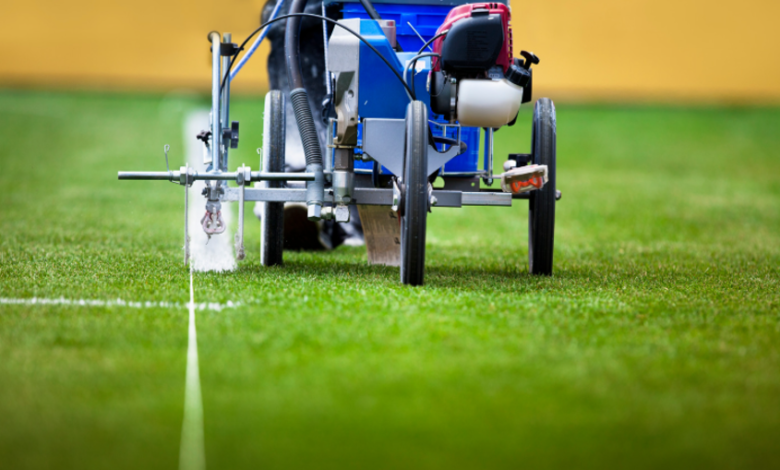How to Choose the Right Field Marking Spray for Different Sports

Selecting the appropriate field marking spray for athletic facilities requires understanding the unique demands of each sport and playing surface. Different sports present varying challenges, including player contact intensity, weather exposure, and maintenance schedules that directly impact marking durability and visibility requirements. Professional groundskeepers must balance factors such as paint adhesion, color vibrancy, and environmental resistance to ensure optimal field appearance throughout the season. The right marking solution enhances player safety while maintaining the professional standards expected at competitive venues. Making informed decisions about marketing products protects facility investments while supporting athletic performance and spectator experience.
Understanding Sport-Specific Requirements
Each sport creates distinct wear patterns and visibility needs that influence marking product selection. High-contact sports like football generate intense field traffic that quickly degrades standard marking materials, while precision sports like tennis require crisp, narrow lines that maintain sharp edges throughout tournaments.
Professional assessment considers game frequency, player density, and equipment impact when determining durability requirements. Baseball diamonds need different marking strategies than soccer fields due to varying player movement patterns and field usage intensity.
See also: Beyond Graduation: Essential Tips for Teens Considering College
Surface Type Considerations
Natural Grass Applications
Natural grass surfaces require marking products that penetrate grass blades while maintaining flexibility during growth cycles. Water-based formulations allow grass to breathe naturally while providing excellent adhesion and color retention under normal playing conditions.
Temperature fluctuations and moisture levels affect paint performance on natural surfaces, requiring products that remain stable across seasonal weather patterns. Professional-grade formulations incorporate additives that enhance weather resistance while maintaining grass health.
Synthetic Turf Requirements
Artificial surfaces present unique challenges, including heat retention, static electricity, and non-porous substrates that affect paint adhesion. Specialized formulations designed for synthetic materials provide superior bonding while resisting heat-related fading and cracking.
Professional marking on synthetic turf requires products that won’t damage expensive artificial fibers while maintaining visibility under intense UV exposure. Understanding why field marking paint is essential for sports fields helps explain the importance of selecting appropriate products for each surface type.
Environmental Durability Factors
Outdoor sports facilities face continuous environmental challenges, including UV radiation, temperature extremes, and precipitation, that can rapidly degrade inferior marking products. Professional-grade formulations incorporate UV stabilizers and weather-resistant polymers that maintain color integrity and adhesion under harsh conditions. Wind-driven rain and snow create additional stress on field markings, requiring products that resist moisture penetration while maintaining flexibility. These environmental factors vary significantly by geographic location and season, influencing product selection decisions.
Tournament facilities require marking products that maintain a professional appearance for extended periods without frequent touch-up applications. This durability reduces maintenance costs while ensuring consistent field quality throughout competitive seasons. Regular use of facilities benefits from marking systems that allow efficient touch-up procedures without complete reapplication. Professional maintenance schedules coordinate marking refresh cycles with field usage patterns to minimize disruption while maintaining optimal appearance.
Application Method Compatibility
Different marking products require specific application equipment to achieve optimal results. Aerosol systems provide convenience for small areas but may not deliver consistent coverage for large field marking projects requiring professional striping machines.
Professional application equipment includes pressure regulation, spray pattern control, and temperature compensation systems that ensure consistent coverage regardless of environmental conditions. Equipment compatibility affects both application efficiency and final marking quality.
Safety and Environmental Considerations
Modern sports facilities prioritize player safety and environmental responsibility when selecting marking products. Low-VOC formulations reduce environmental impact while maintaining performance standards required for professional athletic venues.
Safety considerations when using field marking paints outdoors include proper ventilation, protective equipment, and application timing that protects both applicators and field users from exposure to chemicals or fumes.
Professional application services ensure compliance with environmental regulations while protecting applicator health through proper safety protocols and equipment usage.
Conclusion
Selecting appropriate marking solutions requires careful evaluation of sport-specific demands, surface characteristics, and environmental conditions that affect performance and durability. Professional consultation ensures optimal product selection while expert application delivers consistent, long-lasting results. Investment in quality marking systems and professional services protects the facility’s reputation while supporting athletic performance and safety standards. These decisions impact facility operations, maintenance costs, and user satisfaction throughout the competitive season.

